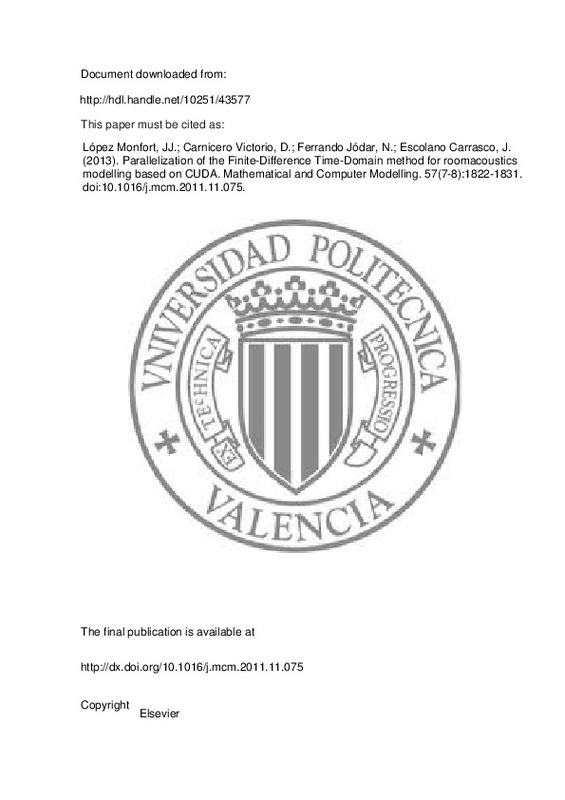JavaScript is disabled for your browser. Some features of this site may not work without it.
Buscar en RiuNet
Listar
Mi cuenta
Estadísticas
Ayuda RiuNet
Admin. UPV
Parallelization of the Finite-Difference Time-Domain method for roomacoustics modelling based on CUDA
Mostrar el registro completo del ítem
López Monfort, JJ.; Carnicero Victorio, D.; Ferrando Jódar, N.; Escolano Carrasco, J. (2013). Parallelization of the Finite-Difference Time-Domain method for roomacoustics modelling based on CUDA. Mathematical and Computer Modelling. 57(7-8):1822-1831. doi:10.1016/j.mcm.2011.11.075
Por favor, use este identificador para citar o enlazar este ítem: http://hdl.handle.net/10251/43577
Ficheros en el ítem
Metadatos del ítem
| Título: | Parallelization of the Finite-Difference Time-Domain method for roomacoustics modelling based on CUDA | |
| Autor: | Carnicero Victorio, Diego Ferrando Jódar, Néstor Escolano Carrasco, José | |
| Entidad UPV: |
|
|
| Fecha difusión: |
|
|
| Resumen: |
The parallelization of the finite-difference time-domain (FDTD) method for room acoustic simulation using graphic processing units (GPUs) has been subject of study even prior to the introduction of GPGPU (general-purpose ...[+]
|
|
| Palabras clave: |
|
|
| Derechos de uso: | Reserva de todos los derechos | |
| Fuente: |
|
|
| DOI: |
|
|
| Editorial: |
|
|
| Versión del editor: | http://dx.doi.org/10.1016/j.mcm.2011.11.075 | |
| Código del Proyecto: |
|
|
| Agradecimientos: |
We thank the anonymous reviewers for their valuable comments and suggestions. We would also like to thank Nvidia for its support through its Academic Partnership Program. This work has been supported by the Ministry of ...[+]
|
|
| Tipo: |
|







![[Cerrado]](/themes/UPV/images/candado.png)


